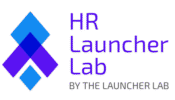Introduction
When your company was small, job descriptions were rarely a top priority. They were often written in a hurry, copied from other companies, or pulled together by hiring managers just before a role was posted. In those early days, they worked well enough. But once your tech-driven business grows beyond 50 employees, those quick fixes stop working. Hiring accelerates, teams expand across multiple time zones, and roles begin to overlap. Misaligned expectations creep in, performance criteria vary from one manager to another, and internal communication suffers. Suddenly, job descriptions aren’t just an HR formality—they’re a strategic gap that can slow your growth.
For scaling SaaS, E-commerce, HealthTech, and EdTech companies, standardizing job descriptions may not sound urgent, but it’s a foundation for sustainable scaling. As hiring spreads across regions and functions, inconsistency in job documentation leads to inefficiencies, slows onboarding, and weakens career development. Standardization turns your job descriptions into a strategic asset—one that guides hiring, supports onboarding, informs performance management, and enables internal mobility. Whether you are hiring developers in Krakow, expanding marketing teams in Berlin, or onboarding customer support specialists in multiple U.S. states, a clear and consistent job description framework ensures alignment at every stage.
Why Job Description Standardization Is Essential for Scaling
Once your organization passes the 50-employee mark, job description standardization becomes business-critical. Without it, misalignment grows, communication suffers, and scaling becomes more costly.
Misalignment slows operations
- Hiring managers define similar roles differently, creating overlaps and confusion.
- Employees operate without clear responsibilities or consistent success measures.
- Promotions and internal moves become subjective, leading to inequity and disengagement.
Global teams need a shared language
- Titles and responsibilities vary across regions, making collaboration harder.
- A “Growth Marketer” in Berlin may have the same role as a “Performance Marketing Lead” in New York, but the lack of alignment can cause duplication and mixed priorities.
Compliance risks increase
- In regulated industries like HealthTech or EdTech, unclear or outdated job descriptions create exposure in visa processes, workplace accommodations, and legal disputes.
AI and automation rely on structure
- Predictive hiring tools, skills mapping platforms, and workforce planning systems need clean, standardized job data to operate effectively. Without it, you get poor results from even the most advanced HR tech.
The Hidden Costs of Inconsistency
The consequences of unstandardized job descriptions often go unnoticed at first but can create compounding challenges across the employee lifecycle.
In talent acquisition
- Candidates disengage when job postings are vague or inaccurate.
- Recruiters waste time clarifying expectations with hiring managers.
- Inconsistent job ads reduce application quality and lead to higher attrition.
In onboarding
- New hires start without a clear picture of their role.
- Managers interpret responsibilities differently, delaying productivity.
In career pathing
- Without consistent standards, promotions become subjective.
- Employees feel stalled in their careers, leading to disengagement and turnover.
These issues are especially damaging in specialized roles like software engineers, data analysts, or product managers where clarity drives retention.
What a Standardized Job Description Framework Looks Like
Standardizing job descriptions doesn’t mean removing local nuance or team culture. It means having a consistent foundation that can adapt to local requirements without losing core structure.
A strong job description template usually includes:
- Official role title
- Department and team assignment
- Purpose or mission of the role
- Five to seven clearly defined responsibilities
- Required skills and qualifications
- Preferred qualifications (optional)
- Reporting structure
- Success metrics and performance expectations
- Location and work arrangement details
- Compensation range when applicable
This format creates global HR consistency and makes it easier to link recruiting, onboarding, performance reviews, and career progression to one source of truth.
How AI Strengthens Job Description Standardization
AI can play a central role in building and maintaining standardized job descriptions across global teams.
Automated job description generation
- Quickly create new descriptions that follow a consistent format based on inputs like job title, department, and required skills.
- Reduce manual drafting time for hiring managers.
Skills mapping and gap analysis
- Identify outdated skills, redundant terms, and missing competencies by comparing your job descriptions against industry benchmarks.
- Adapt to emerging roles in fast-changing sectors like GreenTech and EdTech.
Language harmonization
- Translate and localize job descriptions for multilingual teams without losing consistency in tone or structure.
- Remove ambiguous or potentially risky language across markets.
DEI optimization
- Detect and replace gendered or exclusionary terms.
- Make job postings more inclusive, broadening candidate pipelines.
A Step-by-Step Approach to Standardizing Job Descriptions
Audit your current inventory
- Gather all existing job descriptions from your HRIS, ATS, and shared drives.
- Sort them by department, function, and location.
- Flag outdated, duplicated, or inconsistent entries.
Define your job description framework
- Create a master template with sections for title, mission, responsibilities, skills, and metrics.
- Adapt slightly for different role types such as technical, commercial, or operational positions.
Establish governance
- Assign HR or People Ops to own the master framework.
- Make department heads responsible for ensuring role accuracy.
- Have legal review job descriptions for regulated positions.
Integrate with your systems
- Store finalized job descriptions in your HRIS or a central knowledge base.
- Link them to performance management and career pathing tools.
- Sync with your ATS so job ads align with internal records.
Train managers and stakeholders
- Offer toolkits and short training sessions on using and maintaining the new templates.
- Engage department leaders early to ensure adoption.
Leverage AI for maintenance
- Set up AI alerts for “JD drift” when edits deviate from the template.
- Regularly scan new roles for duplication or missing details.
Overcoming Common Challenges
Lack of time
- Start with high-priority departments and work in sprints.
- Use AI tools to automate formatting, language checks, and data entry.
Team differences
- Maintain the same structure but allow for localized examples or specific competencies.
Cultural resistance
- Involve regional leaders in developing the framework.
- Highlight the benefits for hiring speed, onboarding efficiency, and career mobility.
Outdated tools
- Replace spreadsheets with AI-enabled HR platforms or HCM systems that include job description management capabilities.
Examples of Standardization Success
SaaS company
- Implemented a unified skill taxonomy for engineering roles and standardized success metrics for other teams.
- Increased internal mobility by 30% in one year.
Digital marketing agency
- Created tiered Client Services roles with consistent responsibilities.
- Reduced time-to-fill by 22% through aligned job postings.
EdTech company
- Standardized terminology for learning design and assessment roles.
- Built compliance-ready job descriptions across multiple EU markets.
- Linked L&D programs directly to job description competencies.
Why Standardization Pays Off
Standardizing job descriptions delivers measurable results—faster recruiting cycles, improved retention, stronger diversity in candidate pipelines, and a foundation for AI-driven workforce planning. Treating job descriptions as living, strategic assets rather than static paperwork ensures that your people operations remain aligned, efficient, and scalable. For companies growing across multiple geographies, this isn’t just process improvement—it’s a competitive advantage that will support you as you move from 50 employees to 500.
Hire Smarter. Grow Faster.
Expert tools, templates, and vendor picks to attract and onboard top talent—fast.
- Detailed, step-by-step hiring guides
- Ready-to-use recruiting templates
- Vendor picks for ATS, job boards, background checks & more
Frequently Asked Questions
Why can’t each department write its own job descriptions?
When departments create job descriptions independently, they often use different formats, language, and performance criteria. This makes it harder to compare roles, manage compensation fairly, and ensure consistent expectations across the organization. In global companies, these differences can lead to duplicated roles, missed hiring opportunities, and compliance risks. A centralized job description framework prevents these issues by creating one standard structure for every role.
How often should job descriptions be reviewed?
A good practice is to review all job descriptions at least once a year, aligning the update with performance review cycles or organizational planning. Reviews should also happen when there are significant role changes, new technologies introduced, or shifts in regulatory requirements. This ensures that your standardized job descriptions remain accurate, relevant, and aligned with business goals.
What AI tools can support job description standardization?
Several AI-powered HR tools can help streamline and maintain consistency. Platforms like Eightfold and Workday Skills Cloud can build structured job catalogs, identify missing competencies, and keep terminology aligned with industry standards. Textio and similar tools optimize for inclusive language, while Jasper and other AI writing assistants can generate job descriptions that follow your predefined template.
Can standardization help with diversity, equity, and inclusion (DEI) goals?
Yes. A standardized job description framework helps ensure that qualifications are based on objective criteria rather than subjective preferences. Combined with AI tools that detect biased or gendered language, this approach supports more inclusive hiring and improves the likelihood of attracting diverse talent.
How should companies handle different legal requirements across countries?
The best approach is to maintain a single global job description framework and then add localized compliance requirements for each country. This allows you to preserve consistency in structure while ensuring you meet local labor laws, visa requirements, and industry-specific regulations.
What measurable benefits can we expect from standardizing job descriptions?
Organizations that standardize job descriptions often see faster recruitment timelines, improved new-hire productivity, reduced turnover, and better internal mobility. For global teams, it also streamlines collaboration, improves compliance readiness, and allows AI-driven HR tools to deliver more accurate insights.
Disclaimer
The information on this site is meant for general informational purposes only and should not be considered legal advice. Employment laws and requirements differ by location and industry, so it’s essential to consult a licensed attorney to ensure your business complies with relevant regulations. No visitor should take or avoid action based solely on the content provided here. Always seek legal advice specific to your situation. While we strive to keep our information up to date, we make no guarantees about its accuracy or completeness.
This content may contain affiliate links, meaning we receive a commission if you decide to make a purchase through our links, at no cost to you.
For more details, refer to our Terms and Conditions.

